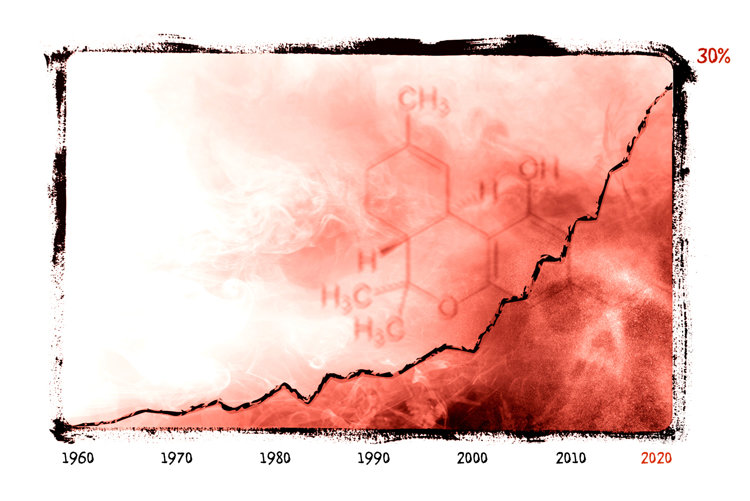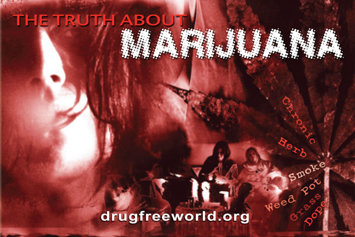HOW MARIJUANA HAS CHANGED OVER TIME
The cannabis plant, from which drugs like marijuana and hashish are made, has been cultivated for over 2,000 years.1
The amount of THC in the plant determines the strength of the drug. The quantity of THC found in marijuana is not consistent and has increased steadily in recent decades.
Using modern techniques, marijuana growers have developed strains of cannabis with much higher levels of THC than in the past. The average THC content of marijuana in the US today is 17–28 percent, with the highest level around 37 percent.1
For comparison:
- The pot smoked from the late 1960s through the 1970s contained less than 2 percent THC.1
- By the 1990s, THC levels had grown to about 4 percent.
- In the 2020s, the average potency is up to almost 30 percent.
- Dabs and edibles contain even more THC, sometimes reaching nearly 100 percent.2
INCREASE OF THC IN MARIJUANA OVER TIME

REFERENCES
- The Problem with the Current High-Potency THC Marijuana from the Perspective of an Addiction Psychiatrist, by Elizabeth Stuyt, Missouri Medicine, National Institutes of Health, National Library of Medicine
- What to Know about Hash Oil, Healthline.com
How much do you really know about marijuana?
Updated:












